![]()
Fire Hose Basics |
Fire hose is the most used item in the fire service. |
| Larger diameter hose can carry more water at lower pressures. | |
| Smaller diameter hose can carry less water and will require higher pressure. | |
| Hose diameter is the most important factor in determining volume of water delivered. | |
| Attack lines are Booster Lines, 1 3/4”, 2 1/2”. | |
| Supply Lines are 3", 4", 5" and 6". | |
Fire hose is manufactured in different configurations:
| |
Fire Hose Sizes:
| |
Intake hose is used to connect a fire department pumper or a portable pump to a near-by water source:
| |
There are two groups of intake hose:
|
![]()
Standards |
NFPA 1961, Standard on Fire Hose – Lists specifications for fire hose. |
| NFPA 1963, Standard for Fire Hose Connections – Lists specifications for fire hose couplings and screw threads. | |
NFPA 1901, Standard for Automotive Fire Apparatus – Requires pumpers to carry:
| |
NFPA # 1964 - Spray Nozzles:
|
![]()
Suction HoseHard Suction |
Hose that is designed to prevent collapse under vacuum conditions so that it can be used for drafting water from below the pump (lakes, rivers, wells, etc.). |
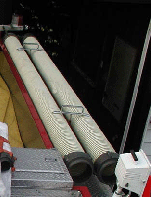 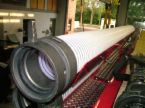  | |
Soft Suction |
Hose that is designed to carry water between:
|
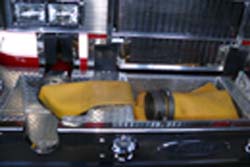  |
![]()
Attack Hose |
Hose designed to be used to combat fires beyond the incipient stage. |
| Attack hose shall have a minimum design operating test pressure of 275 psi. | |
Attack Hose-1” Booster Line |
Rubber Hose:
|
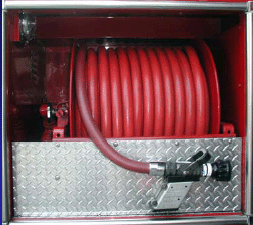 | |
|---|---|
Attack Hose -1 3/4" |
Primary Attack Line for House and Vehicle Fires |
Double Jacketed
| |
| Can be operated by 2 - 3 firefighters | |
| Can deliver 140 - 200 gpm | |
| Working pressure and volume varies with nozzle type | |
| Used with both solid bore and fog type nozzles | |
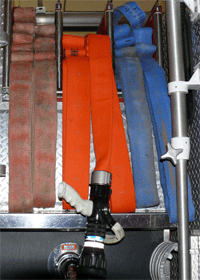 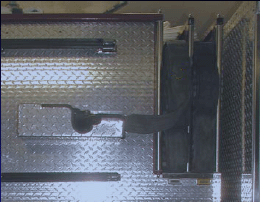 | |
Attack Hose - 2 1/2" |
Primary attack line in Commercial Buildings and Exterior attacks |
| Used to back up smaller hand lines | |
Double Jacketed
| |
| Needs 3 - 4 or more firefighters to operate | |
| Delivers high volume of water (200- 300 gpm) | |
| Relatively difficult to operate, especially in tight spaces | |
| Used with both solid bore and fog type nozzles | |
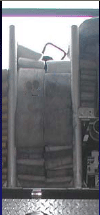 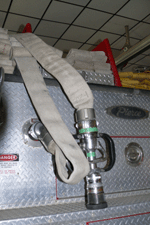 |
![]()
Fire Hose Appliances and Hose Tools
![]()
 |
 |
 |
 |
 To Kolb |
|---|